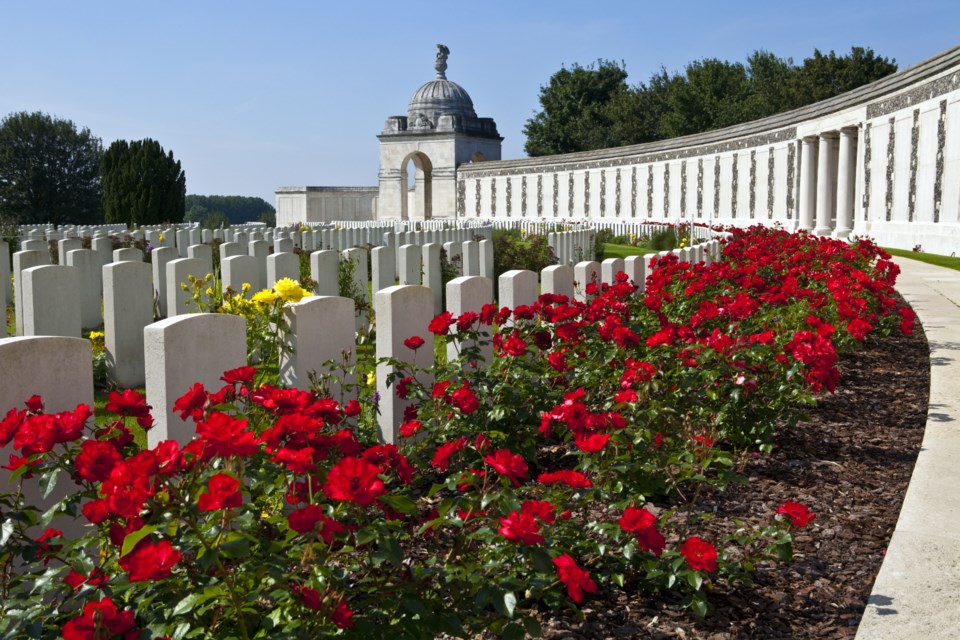The Battle of Vimy Ridge was considered the defining moment for Canada in the First World War, but for Pte. Arthur Ernest Thomson, he would not live to see how his efforts contributed to the country’s growth.
Thomson was born in London, England on June 2, 1897 to Arthur Ernest and Margaret Elizabeth Thomson, before the family immigrated to Moose Jaw and lived at 1029 Stadacona Street East.
Thomson eventually joined the 2nd Canadian Mounted Rifles (British Columba Regiment). The regiment was part of the 8th Canadian Infantry Brigade, 3rd Canadian Division, which fought in northeast France and Flanders, Belgium.
The Battle of Vimy Ridge ran from April 9 to 12, 1917 and ended with the ridge firmly in Canadian hands. However, Thomson was killed on April 11 at age 20, just one of about 10,000 men killed or wounded.
Thomson was later buried at Lapugnoy Military Cemetery in northeast France.
As part of a project with Moose Jaw’s Royal Canadian Legion Branch No. 59, the Moose Jaw Express/MooseJawToday.com is highlighting several men who died during the First World War.
A muddy death
Sgt. Harry Dwight Corrigan was born in Winchester, Ont., on Sept. 17, 1889, to John E. and Emma Corrigan, and later moved to 1084 Clifton Avenue in Moose Jaw.
Corrigan enlisted with the 46th Battalion (Saskatchewan Infantry Regiment) in Moose Jaw and travelled overseas with the unit. The regiment was also called the Suicide Battalion because of the high casualty rate it suffered during the war.
Corrigan died at age 28 on Oct. 25, 1917, either because of his wounds suffered or during the Third Battle of Ypres in Belgium. That corner of northeast Europe would have been a muddy mess because of the weather and the shelling that tore up the land.
Corrigan was buried in Potijze Chateau Lawn Cemetery in Ypres.
Brothers in arms
Besides Corrigan, Lance-Cpl. William Taylor was another Moose Javian who served in the Suicide Battalion and died in 1917.
Taylor was born on March 31, 1884, to John and Rachael Taylor of Apple Hall, Rochdale, Lancaster, England, and later married Mary H. Taylor of Ninth Avenue in the Grandview neighbourhood.
Taylor had plenty of military experience before the First World War, after he served in India, South Africa and Singapore with the Manchester Regiment.
Of the major battles of August 1917 was the Battle of Hill 70. It’s possible this is the battle in which Taylor was killed since he died on Aug. 21. He was later buried at Villers Station Cemetery in France.
An unknown grave
Pte. James Duckworth was born on Feb. 24, 1893 to Mr. J. Duckworth of Dunmore Dairy in Moose Jaw. He enlisted early days and was attached to the 5th Battalion (Saskatoon Light Infantry Regiment).
The fighting was ferocious in Belgium in 1915, as the battalion fought in battles such as Ypres, Gravenstafel and St. Julien. It’s during any of these battles that Duckworth died, after he was killed on May 24, 1915 at age 22.
Since his body could not be found, his named was added to the Vimy Ridge memorial.
Another missing body
Pte. Herbert Percival Stevens was born in 1873 to Mr. and Mrs. John Stevens and later married Ann Stevens of 1017 First Avenue Northwest in Moose Jaw.
Stevens went overseas with the 7th Battalion (B.C. Regiment) and was later killed on Aug. 15, 1917 at age 44. Since his body was never found, his name was also inscribed on the Vimy Ridge monument.




